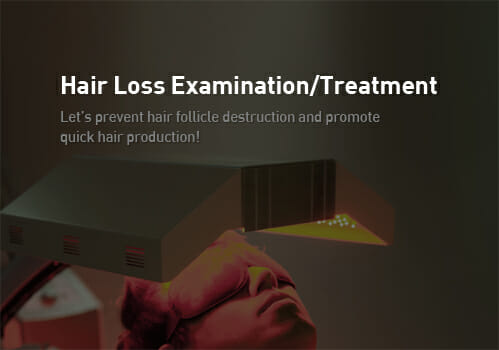Announcement
What is SMP Therapy for Parietal Hair Loss Patients?
- 2013-12-24
2013.12.04 15:07:19
The most effective treatment has been found for parietal alopecia patients, straight hair alopecia patients, and those suffering from hair transplant scars. This is the SMP (Scalp Tattoo) of NHI New Hair, the first in Korea to introduce scalp pigmentation therapy. SMP is a procedure announced by the NHI New Hair Hair Transplant Center after a one-year clinical test in collaboration with Korea and the United States, and is a procedure that has been in the spotlight by patients with parietal hair loss and hair loss patients with straight hair from 2010 to the present.
This procedure is a method in which the same pigment as the color of the hair is injected into the scalp through a microneedle, and the pattern and shape are the same as the actual hair and are irregular and fine. If SMP is applied to people who always maintain a straight hair style due to hair loss, the visual effect is excellent as if all of the actual hair was shaved. Also, since the types of pigments are divided into semi-permanent and permanent types during the procedure, patients have a wide range of options.
This is effectively applied to hair loss on the head of a woman, who is considered difficult to transplant hair, and is effective enough to eliminate the need to visually use heukchae as it can be semi-permanently covered by applying it to the scalp of the sparse or thinned head. It is effective not only for women’s parietal hair loss, but also for men who suffer from lack of density in the parietal area due to hair loss.
SMP is not actually a hair transplant, but it reproduces the traces left when short hair is cut, so it can visually hide the bright part of the scalp and aid in insufficient hair density.
Both pigments and microneedles used were developed through joint research over a year, so they do not affect the scalp tissue or surrounding hair follicles, so it is beneficial even if you are considering a hair transplant in the future. Conversely, even if the scar remains large because the back hair is not sutured well after the hair transplant, applying SMP can be of great help in covering up the scar.
For people with shaved hair, SMP, which can create a natural look like shaving their hair, and effectively masks the back hair scar caused by hair transplantation, can be received comfortably without pain through local anesthesia, and the shape and color are natural, so it can be used for the eyes. Even if you look closely, you cannot easily notice. It is also good news for the removal of hair transplant scars, which had to live a lifetime due to the immature treatment of the incision at the back of the head during hair transplantation.
Written by: Jin-oh Kim, Director of NHI New Hair Hair Transplantation Center.
View original text: http://www.econotalking.kr/xe/index.php?document_srl=110122&mid=lifestyle_2010


















